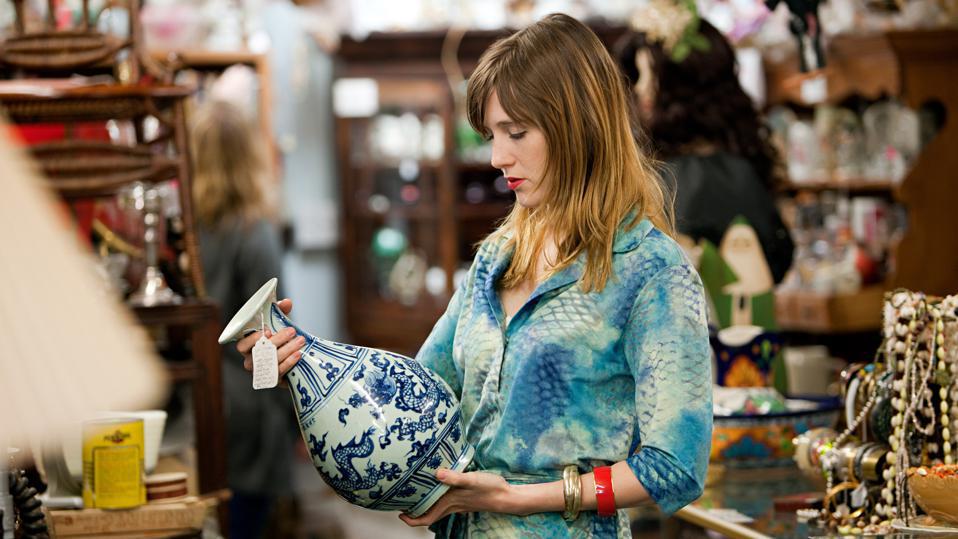Editorial Note: We earn a commission from partner links on Forbes Advisor. Commissions do not affect our editors’ opinions or evaluations.
Collectibles are anything of value that people might, well, collect—from stamps, coins and cars to vintage Barbie dolls. Investing in collectibles is a great way to diversify your portfolio while also owning things you love.
Can collectibles deliver the same returns as stocks, bonds and other traditional investment classes? That depends. Typically, the value of a collectible is in the eye of the beholder, and like any other investment there’s no guarantee you’ll make money.
What Are Collectibles?
Collectibles can be defined as items that are worth more now than they were when they were originally sold. Art, antiques, stamps, books, coins, trading cards, toys and comic books are common types of collectibles. Rare collectibles often fetch higher prices, and the value of collectibles tend to appreciate over time.
Take, for example, the ultra-rare “Rabbit,” a stainless steel sculpture created in 1986 by artist Jeff Koons, which sold at auction for a record-breaking $91.1 million in May 2019. It’s still the most expensive piece of art ever sold by a living artist.
Other items are mass-produced and become collectibles—Beanie Babies, anyone? Believe it or not, some of these plush, pellet-filled garage sale treasures may still be worth something (to someone, anyway). A recent eBay search yielded a listing for the 1997 Princess Diana Purple Bear with an $900,000 “Buy It Now” price.
Ideally, collectibles should pique the passion of the collector. An authentic Babe Ruth baseball card is likely going to be worth a lot more to someone who’s into baseball and collecting vintage sports cards than someone who couldn’t care less about the history of the sport.
Nostalgia also plays a role in a collectible’s value. Nostalgia cycles tend to arrive in 20- to 30-year waves. That is to say, something that’s popular now, such as clothing or collectible toys, has the potential to become a collectible 20 or 30 years in the future as people get the itch to reconnect with their past.
There are no guarantees that’ll happen, though. In other words, if your retirement plan includes hoarding today’s top-trending items in the hopes that you’ll get rich by selling them to nostalgic Gen Zers two or three decades from now, you may want to consider another strategy.
Finally, price is often determined by a collectible’s condition. Even the smallest imperfection can wipe out its value. Again, that same vintage Babe Ruth card will garner a higher price in its original and pristine condition versus one that may be rendered worthless because of a few scratches or a bent corner.
Collectibles Are Alternative Investments
Collectibles are considered to be an alternative investment, a group of investment assets that fall into the “other” category. Put another way, alternative investments aren’t the usual suspects like stocks, bonds, mutual funds or cash.
Here’s the difference: When you put your money into traditional investments, like stocks, you expect that they’ll return income payments or profit (or both). Collectibles, on the other hand, have no intrinsic value.
“Collectibles are often subject to the tastes, moods and perceptions of buyers and sellers, which are typically temporary and can diminish overnight,” says Rob Drury, executive director of the Association of Christian Financial Advisors.
While investing in “alts,” as they’re called, can be exciting and rewarding, it can also be risky. With collectibles, there’s zero guarantee that you’ll recoup your initial investment or that you’ll be able to sell it in the future for more than it’s currently worth (it’s worth noting this is also a risk factor for many other investment assets).
Collectibles and Fraud
The world of collectibles also has a dark side rife with scams, con artists and fraud. For that reason alone, it’s critical that you be on guard so you don’t get ripped off. Understanding how to vet dealers and discern between genuine and fake collectibles may not only save you money, it could prevent a lot of heartache.
Take this tragic tale, for example: The family of a retired New Jersey firefighter found out the hard way he’d been duped out of hundreds of thousands of dollars. After he died, his family discovered that the sports memorabilia collection he’d spent more than $100,000 building—including balls and bats signed by Mickey Mantle, Babe Ruth and other baseball legends—was full of fakes.
All were sold to him by the same dealer, who’d achieved credibility and fame by purchasing the personal collection of New York Yankee Joe DiMaggio. That dealer later became infamous for selling counterfeit baseball memorabilia.
Potential Rewards of Investing in Collectibles
Of course, not all collectibles investing ends as cautionary tales. When purchased intentionally, with thoughtful research, collectibles have the potential to appreciate in value and deliver better-than-decent returns.
You don’t have to spend hundreds of thousands of dollars to reap those rewards, either. For instance, consider this recent study on “Star Wars” collectibles from Self Financial, a fintech company focused on helping people build credit. It’s no surprise that one of the largest and longest-standing franchises of all time—the first movie, Star Wars: Episode IV – A New Hope, was released in May 1977—also boasts a vast trove of collectible treasures.
Some of those items sold for just a few dollars 40 years ago. Today, Star Wars collectibles could be worth thousands. For example, say you’d purchased an original 12 Back Vinyl Cape Jawa action figure for $5 back in 1980. In mint condition, that collectible toy Jawa could fetch upwards of $7,739 today—an increase of 4,000%, according to Self Financial’s study, which used eBay listings from April 2020-21 to conduct its analysis.
Another oft-cited example is the first edition of The Amazing Spiderman comic. Stan Lee’s timeless story of Peter Parker, a high school outcast turned superhero by a radioactive spider bite, sold for a mere $0.12 when it was first published in 1962. In 2011, ComicConnect.com CEO Stephen Fishler sold a copy for an eye-popping $1.1 million.
Advantages of Investing in Collectibles
- Diversification. Collectibles may provide your portfolio with diversification. It’s always helpful to have your eggs in more than one basket, instead of investing only in stocks and bonds.
- Portability. Collectibles are a physical asset. You can hold rare collectible coins in your hand, for example. You can also transport them easily, so you can sell or trade collectibles anywhere in the world.
- Follow your passion. Unlike a share of stock or a bond investment, you get to enjoy your collectibles while waiting for them to appreciate in value. You can display a rare painting on your wall, or drive a vintage car on weekends.
- Fun. True collectors revel in the thrill of the hunt—searching out the item of their desire is almost as satisfying as owning it.
- Easy access. Getting your hands on collectibles is relatively simple through online marketplaces such as eBay or in local stores. If you know what to look for, you may even be able to pick up items of value at yard sales, thrift stores or pawn shops.
Downsides of Investing in Collectibles
- Rampant fraud. As mentioned above, unless you’re an expert, collectibles are extremely risky. It’s an unregulated industry full of frauds, fakes and forgeries, and even experts can be fooled by a convincing knock-off.
- Markups. Collectibles dealers are notorious for marking up items so they can make a profit. Unlike collectors, most dealers don’t have the luxury of buying and holding an item that may or may not increase in value. They need to make a sale so they can pay their overhead and restock inventory.
- Tough comps. When buying and selling collectibles, it’s a good idea to look at the going rates for similar items. Bear in mind, though, that if a comparable item is appraised at $5,000, that doesn’t mean yours will be valued in the same ballpark. A collectible’s value depends largely on its condition and rarity.
- Lack of liquidity. Collectibles are largely illiquid because cashing out depends on your ability to find a buyer willing to pay your asking price.
- Damage diminishes the value. Any scratch, ding or blemish can cause a once-coveted collectible to decline in value or become worthless.
- You have to store and insure collectibles. If you don’t store them properly, collectibles can easily get ruined from sun or water damage and other hazards. And the cost to insure them is about 1% to 2% of the item’s value, per year. So a $10,000 piece would cost about $100 to $200 a year to insure.
- No income stream. Investments like stocks and real estate may yield an income in the form of dividends or monthly rent payments while you wait for their values to rise. Not so with a collectible—you have to hold onto it until you can sell it.
How Are Collectibles Taxed?
A quick word on taxes: The government isn’t a fan of buying and selling collectibles, so their sale is heavily taxed.
If you’ve owned a collectible for more than a year, it may be subject to a maximum long-term capital gains tax of 28% when you sell it. That’s notably higher than the 15% capital gains tax for traditional investments like stocks and bonds. If you sell a collectible after owning it for less than one year, you’ll be taxed at your ordinary income tax rate.
The amount you owe the Internal Revenue Service (IRS) is determined by your basis—the amount you paid for the collectible when you bought it, plus any auction or broker fees. You can also add to your basis any money you spent restoring, refurbishing or maintaining your collectible. Subtract your basis from the sale price—you’ll be taxed on the difference.
Should You Invest in Collectibles?
Collectibles aren’t for everyone. They’re risky and speculative, and require in-depth research and a fair amount of experience to truly be successful.
If you’re sold on investing in collectibles, consider getting expert advice and working with reputable dealers. It’s probably a good idea to consult with your financial professional to understand how these investments may impact your portfolio and estate planning. Know what you’re buying, and where the market is going. Don’t invest more than you can bear to lose if the collectible doesn’t produce the return you expected. Finally, find gratification in owning the items you collect, and don’t purchase them with the expectation that they’ll return anything but years of enjoyment.
Another thing to keep in mind is that collectibles are illiquid, taxable investments that don’t produce an income unless you can sell them. They can also lose their value in a heartbeat if broken, damaged, lost or stolen. If you’re inspired to purchase a collectible, it should be something you truly love and can afford, and that you won’t mind holding onto, potentially forever.
How much of your portfolio should you hold in collectibles? In general, not very much. “I always recommend that collectibles never make up more than 5% to 10% of an overall investment portfolio based on the person’s investment experience and total wealth,” says Josh Simpson, a financial advisor with Lake Advisory Group in Lady Lake, Fla.
Featured Partner Offers










